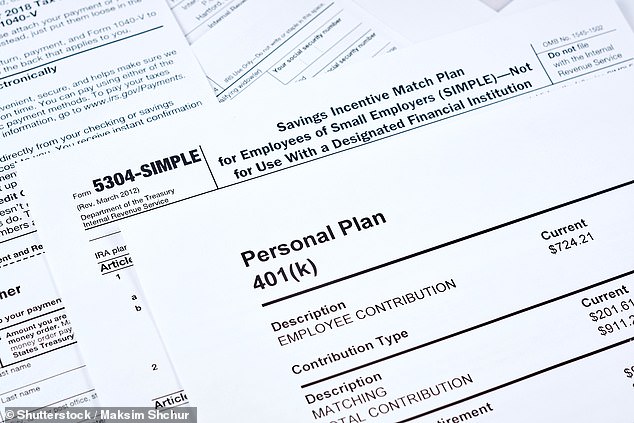Americans will be allowed to put more money into their retirement accounts next year after the IRS announced higher 401(k) limits for 2026.
The agency said on Thursday that workers can contribute up to $24,500 to their 401(k)s in 2026 — a $1,000 jump from the $23,500 cap for 2025.
The higher limit applies to 401(k)s, 403(b)s, most 457 plans and the federal Thrift Savings Plan.
Older savers will also get a bigger break. The catch-up contribution limit for Americans aged 50 and over will rise to $8,000 in 2026, up from $7,500 next year.
But under the Secure 2.0 law, workers aged 60 to 63 can put away even more: an additional $11,250 on top of the standard limit. That higher allowance remains unchanged from 2025.
The new thresholds, on top of the $24,500 limit, mean some retirement savers could tuck away more than $35,000 next year before employer contributions are even added.
The increase in 401(k) limits means millions of Americans can shield more of their income from taxes while boosting their retirement savings at a time when living costs are rising and Social Security’s future looks uncertain.
For a typical worker, maxing out these limits can mean tens of thousands of extra dollars in tax-advantaged savings over just a few years — and hundreds of thousands more in long-term investment growth.

The IRS, led by acting chief Scott Bessent, issued sweeping new rules boosting how much Americans can save for retirement in 2026

Millions of Americans will be able to save more for retirement in 2026 after the IRS raised 401(k) and IRA limits
Still, only a small share of Americans actually reach the maximum. Just 14 percent of workers maxed out their 401(k)s in 2024, according to Vanguard’s latest How America Saves report, which analyzed more than 1,400 plans and nearly 5 million participants.
Vanguard found the typical combined savings rate — including what employers chip in — was about 12 percent.
A 401(k) is a retirement plan offered by employers that lets workers save money tax-free until they withdraw it.
Many companies also match contributions, making it one of the most powerful ways Americans can build wealth.
The IRS also boosted IRA savings limits. Americans can contribute $7,500 to an IRA next year, up from $7,000, while the IRA catch-up limit for those 50 and over increases to $1,100.
Income thresholds used to determine who can deduct traditional IRA contributions are also rising in 2026.
The income limits for making Roth IRA contributions are also climbing.
The announcement came just hours after Donald Trump signed a funding bill to end the longest government shutdown in US history.

401(k)s have a few special features that make them very different — and in many ways much more powerful — than ordinary savings accounts
Last month, the IRS also announced an increase in income limits for federal tax brackets to account for inflation.
The IRS updates the brackets each year to prevent ‘bracket creep,’ when inflation pushes taxpayers into higher rates and forces them to pay more.
The top federal rate of 37 percent will now apply to individuals making more than $640,600 and married couples earning over $768,700 in 2026. That’s roughly a 2.5 percent jump from the current thresholds.
The agency also boosted the standard deduction, the amount Americans can automatically subtract from their taxable income.
Married couples filing jointly can now deduct $32,200, up from $31,500 this year, while single filers get $16,100, compared with $15,750— both increases of 2.2 percent. Heads of household will get $24,150 instead of $23,850, up 1.3 percent.
